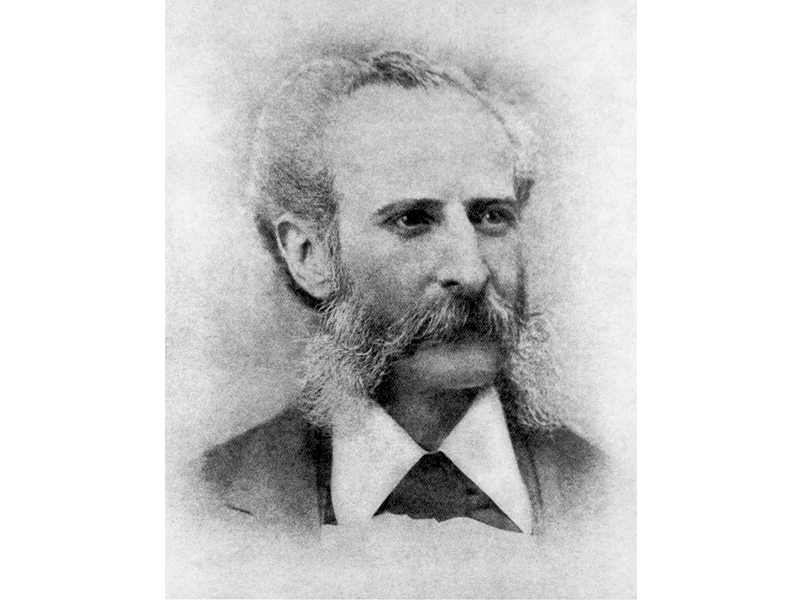In honour of Canada’s 150th birthday, The CJN presents 40 profiles of some of the most prominent Jewish Canadians throughout our history.
Sigismund Mohr is largely unremembered today, yet this modest Jewish immigrant helped to transform the face of Quebec in the late 19th century. By the time of his death, Mohr, known for his fierce determination, had managed to combine his technical knowledge, inventive mind and unfailing enthusiasm to significantly increase the adoption of the telephone and electricity in Quebec. If one had met him when he first arrived in Canada, however, one might never have guessed what he would accomplish.
Mohr was born on Oct. 21 1827, in Breslau, Prussia (now Poland). He married Blume Levi, with whom he had five daughters and two sons. Nothing is known about Mohr’s early years, except that he graduated as an electrical engineer from a college in Breslau in 1849. He is believed to have spent a few years in London, before immigrating to Canada and taking up residence in Quebec around 1871, when he was already in his 40s.
Mohr’s first years in Canada were marked by poverty. In 1875, he was under court orders to pay $100 for products purchased and was again ordered to pay $412 to a merchant in 1877. In 1879, much of his furniture was confiscated for failure to pay the rent for his living quarters on Rue Saint-Jean. On Feb. 25, 1880, his attorneys argued that the premises were unhealthy and had been so declared by “the City Inspector, who, after examining the aforesaid house, condemned it as uninhabitable and ordered the defendant and his family to move out at once.”
At some point, Mohr jumped into the cutting-edge telegraph business and in 1876, he gained an exclusive, seven-year contract to promote the telegraph in Quebec City.
READ: THE CJN’S SPECIAL COVERAGE OF CANADA’S SESQUICENTENNIAL
Mohr began promoting the telephone in Quebec, amidst an atmosphere of keen competition. Alexander Graham Bell had accepted an offer to buy his invention in March 1880 from National Bell Telephone of Boston, which hastily set up a Canadian company. The Bell Telephone Company of Canada bought the Dominion Telegraph Company, which by then Mohr had become an agent of. Thus, he became an agent for the Bell Telephone Company of Canada. Mohr increased the number of subscribers from 79 to 240 in six months.
When it came to installing poles, Mohr found himself at the centre of a storm of controversy, caused by the resistance of many to the cluttering of Quebec’s narrow streets. On numerous occasions, he had to go back to city council and he was taken to court by James Carrell, the owner of the Daily Telegraph. A complex legal battle ensued and various governments became involved, in regard to connections that were interprovincial or international.
As soon as the trial was over, Mohr obtained permission to install a telephone cable between Quebec City and Lévis, Que., on condition that he find 10 enterprises willing to subscribe for $100 a year, an objective Mohr reached soon after. His interest then turned towards other applications of electricity.
On the evening of Sept. 29, 1885, Mohr became a local legend. According to the next day’s issue of Le Canadien, “The great electric light exhibition, so impatiently awaited, took place last night on Terrasse Dufferin, with a success that drew the applause of 20,000 people.… M. Mohr, the active and intelligent manager (of the) Compagnie de Lumière Électrique de Québec et Lévis has succeeded beyond all expectations” in transporting the “fluid” to the “34 centres of light” set up on the terrace. On a signal given by lieutenant governor Louis-François-Rodrigue Masson “by means of an electric bell (the) appearance of the terrace was transformed as if by a magic wand.”
After two days of demonstrations, Mohr made his light show more complicated by cutting off the current and restoring it an instant later. The crowd went wild. The people demanded electricity. For a week, Mohr would repeat his feat of transporting the “fluid” over a distance of 34 miles.
In November 1893, a storm damaged the power line linking Quebec City and Montmorency Falls and Mohr set to work repairing the damage in bad weather. He caught a serious case of influenza, which rapidly became worse and brought about his death on Dec. 15, 1893. All the Quebec newspapers prominently reported his passing.







